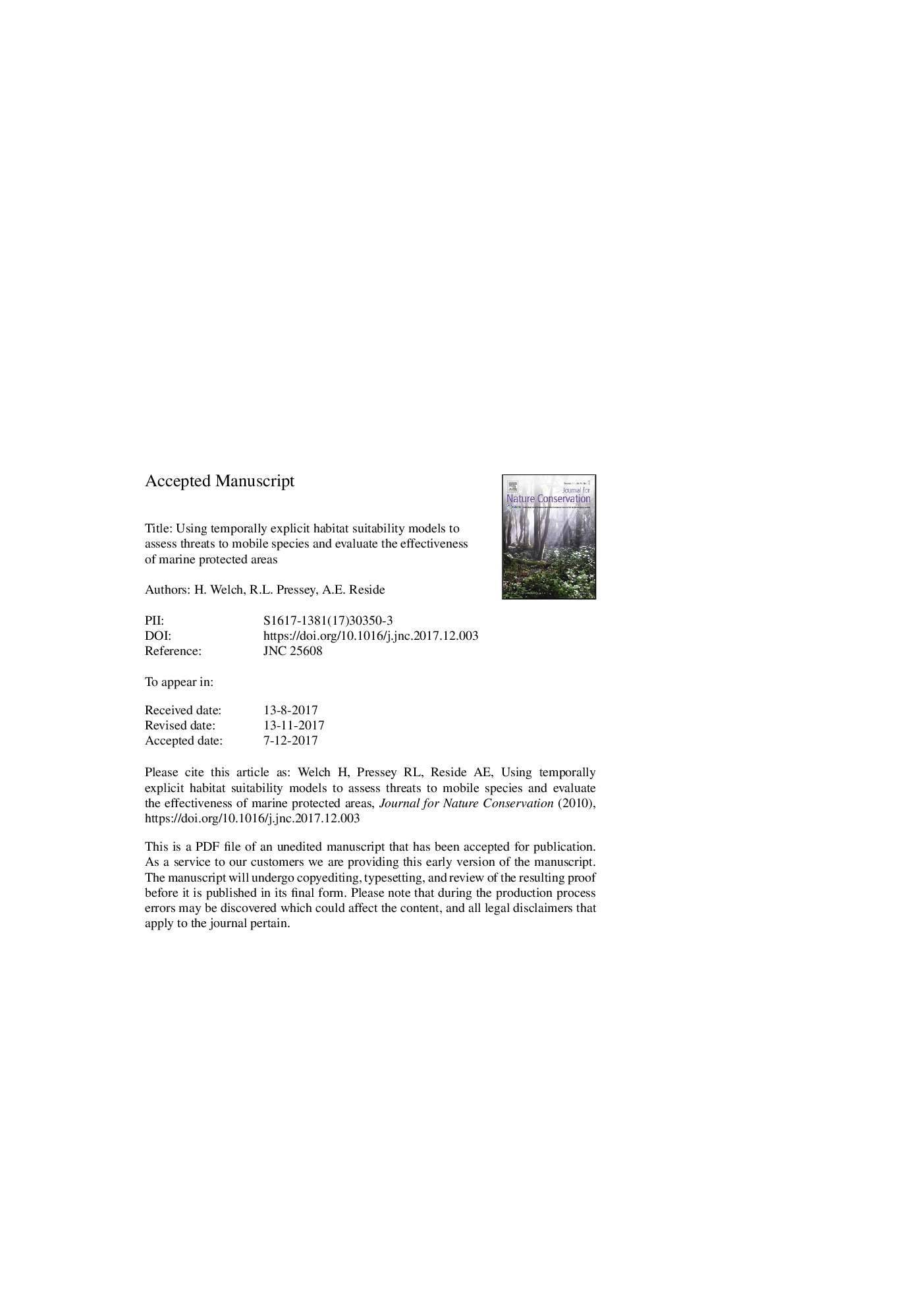| کد مقاله | کد نشریه | سال انتشار | مقاله انگلیسی | نسخه تمام متن |
|---|---|---|---|---|
| 8849332 | 1618527 | 2018 | 44 صفحه PDF | دانلود رایگان |
عنوان انگلیسی مقاله ISI
Using temporally explicit habitat suitability models to assess threats to mobile species and evaluate the effectiveness of marine protected areas
ترجمه فارسی عنوان
با استفاده از مدل های مناسب برای زیستگاه صحیح برای ارزیابی تهدیدات به گونه های متحرک و ارزیابی اثربخشی مناطق حفاظت شده دریایی
دانلود مقاله + سفارش ترجمه
دانلود مقاله ISI انگلیسی
رایگان برای ایرانیان
کلمات کلیدی
کلید واژه ها، باگ شیلات، تجزیه و تحلیل فاصله، حداکثر رزرو شبکه مدل توزیع گونه،
موضوعات مرتبط
مهندسی و علوم پایه
علوم زمین و سیارات
علوم زمین و سیاره ای (عمومی)
چکیده انگلیسی
A principal role of marine protected areas (MPAs) is to mitigate the decline of biodiversity. A key part of this role is to reduce the effects of fisheries on bycatch of vulnerable species. Bycatch can have an impact on species by reducing population sizes, and an ecosystem-level impact through the significant removal of biomass and subsequent trophic changes. In this regard, it is crucial to refine methods for quantifying interactions between fisheries and bycatch species, and to manage these interactions spatially. A new method is presented for quantifying interactions between fisheries and bycatch species at high spatial and temporal resolutions. Temporally explicit species distribution models are used to examine temporal dynamics of fisheries and bycatch. This method is applied to Australia's Eastern Tuna and Billfish Fishery to estimate interactions with seven principal bycatch species. The ability of MPAs to reduce bycatch is evaluated, and considerations are outlined for the spatial management of fishery-bycatch species interactions. Australia's Commonwealth Marine Reserve Network had a minimal impact on bycatch reduction under both the 2012 proclaimed and the 2015 panel-recommended zonings. These results highlight the need for threats to marine biodiversity to be incorporated directly into design of MPAs, and for close scrutiny of assumptions that threats will be incidentally abated after MPAs have been proclaimed, or that off-reserve mechanisms will compensate for inadequacies of MPAs.
ناشر
Database: Elsevier - ScienceDirect (ساینس دایرکت)
Journal: Journal for Nature Conservation - Volume 41, February 2018, Pages 106-115
Journal: Journal for Nature Conservation - Volume 41, February 2018, Pages 106-115
نویسندگان
H. Welch, R.L. Pressey, A.E. Reside,
